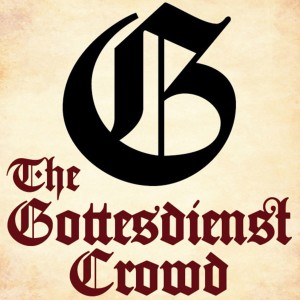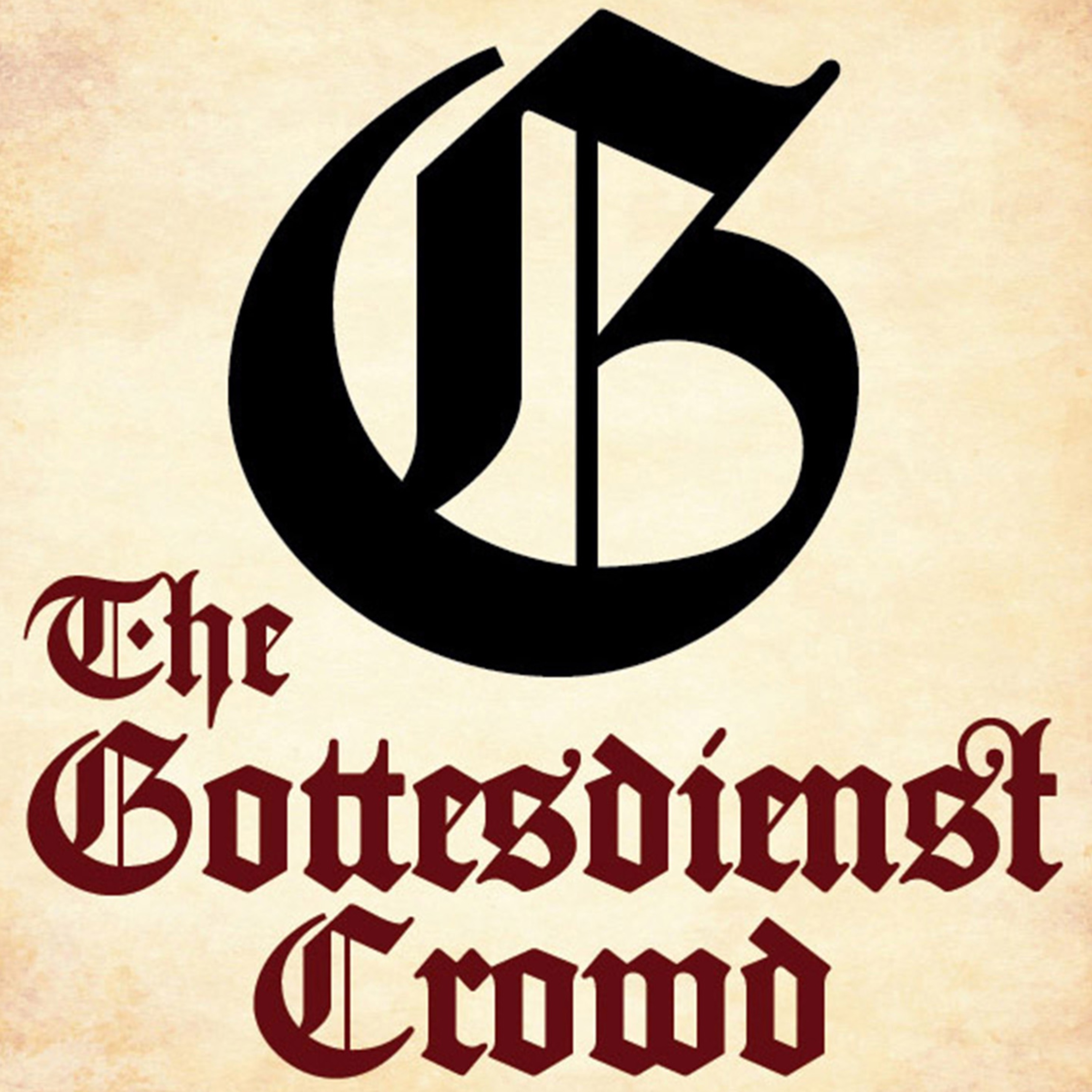Episodes
![[Gottesblog] Whataboutism — Larry Beane](https://pbcdn1.podbean.com/imglogo/image-logo/332069/G_logo_1500_f5mj7a_300x300.jpg)
Saturday Nov 27, 2021
[Gottesblog] Whataboutism — Larry Beane
Saturday Nov 27, 2021
Saturday Nov 27, 2021
Read the entire post here: https://www.gottesdienst.org/2021/10/22/on-whataboutism

Monday Nov 22, 2021
TGC 149 — Advent 1 Sermon Prep
Monday Nov 22, 2021
Monday Nov 22, 2021
This episode is devoted to the Gospel reading for Advent 1, Matthew 21:1–9.
Read the rest of this entry »
Monday Nov 15, 2021
TGC 148 — Trinity 27 Sermon Prep
Monday Nov 15, 2021
Monday Nov 15, 2021
This episode is devoted to the Gospel reading for Trinity 27, Matthew 25:1–13.
Read the rest of this entry »
Wednesday Nov 10, 2021
TGC 147 – The Sojourner and the Foreigner
Wednesday Nov 10, 2021
Wednesday Nov 10, 2021
There's a lot of talk these days about the duty of Christians in America to be accepting of the government's policies on open borders and refugee status. In this episode, we take a look at what the Bible says about these things and seek to apply the biblical witness to our modern discussions and provide a framework of understanding for what is God pleasing.
Host: Fr. Jason Braaten
Special Guest: Fr. David Ramirez
Read the rest of this entry »
Monday Nov 08, 2021
TGC 146 — Trinity 26 Sermon Prep
Monday Nov 08, 2021
Monday Nov 08, 2021
This episode is devoted to the Gospel reading for Trinity 26, Matthew 25:31–46.
Read the rest of this entry »
Monday Nov 01, 2021
TGC 145 — All Saints Sermon Prep
Monday Nov 01, 2021
Monday Nov 01, 2021
This episode is devoted to the Gospel reading for The Feast of All Saints, Matthew 5:1–12.
Read the rest of this entry »
Wednesday Oct 27, 2021
TGC 144 — On Observing the Reformation
Wednesday Oct 27, 2021
Wednesday Oct 27, 2021
In this Gottescast, The Gottesdienst Crowd discusses how one is to understand the Lutheran Reformation and how we thus observe it liturgically. David Petersen (pastor of Redeemer Lutheran Church, Fort Wayne, IN, and author of the recurring column "Commentary on the War" in the Gottesdienst Journal) joins us for the discussion.
You can read Bugenhagen's sermon for Luther's funeral here: http://luther.digitalscholarship.emory.edu/luther/luther_site/luther_frame.html
You can read Hamann's essay here: http://mercyjourney.blogspot.com/2012/12/the-false-antithesis-not-lutheran-but.html
You can read Stuckwisch's LSB Core Hymnody post here: http://sword-in-hat.blogspot.com/2007/08/lsb-core-hymnody-kernlieder.html
You can subscribe to the Journal here: https://www.gottesdienst.org/subscribe/
You can read the Gottesblog here: https://www.gottesdienst.org/gottesblog/
You can support Gottesdienst here: https://www.gottesdienst.org/make-a-donation/
As always, we, at The Gottesdienst Crowd, would be honored if you would Subscribe, Rate, and Review. Thanks for listening and thanks for your support.

Monday Oct 25, 2021
TGC 143 — Reformation Sermon Prep
Monday Oct 25, 2021
Monday Oct 25, 2021
This episode is devoted to the Gospel reading for The Commemoration of the Reformation, John 8:31–36.
Read the rest of this entry »![[Gottesblog] A Tale of Two Magazines — Larry Beane](https://pbcdn1.podbean.com/imglogo/image-logo/332069/G_logo_1500_f5mj7a_300x300.jpg)
Friday Oct 22, 2021
[Gottesblog] A Tale of Two Magazines — Larry Beane
Friday Oct 22, 2021
Friday Oct 22, 2021
A Tale of Two Magazines

When I was in seminary (twenty years ago), we had a nickname for the Lutheran Witness. We called it the Witless. Frankly, it was not much of a witness and it was barely Lutheran.
But then, something incredible happened. It got good. It may have been when Adrienne Heins took over. There were a series of editors who seemed to have a vision of making the magazine, well, a witness, and also Lutheran. Genuinely Lutheran. Authentically Lutheran. Intentionally Lutheran. Confessional, liturgical, Gnesio, and unapologetically Lutheran.
Imagine that!
It was also aesthetically pleasing.
Not long thereafter, the souls from Dante’s concentric circles (okay, not really, that is just literary license) began to weep and gnash their teeth. There were too many C’s in the new and vastly improved Lutheran Witness, including, but not limited to the following “Seven C’s” (with apologies to Ken Ham):
-
Clergy
-
Collars
-
Chasubles
-
Crucifixes
-
Chalices
-
Confessions
-
Church
Where are the pastors in ties and khakis and hipster tee shirts and silly hats? And why are there so many pastors anyway? Where are the feelgood fluff pieces? Where are the kinds of images that would appeal to non-Lutherans and progressives and opponents of the liturgy? And what’s with all of this Book of Concord stuff?
But weep no more, bronzies, boomers, church-growthers, imbibers of soy, and in the words of the late Reverend Professor Kurt Marquart: “little old ladies of both sexes.” For CPH has discontinued sending a free copy or two of LW to your congregation, but has started sending free bulk subscriptions of a new publication called Lutheran Life! That’s Life not Lite.
Gone are the pesky C’s. Now we have articles and a color palette to appeal to women and older folks. Not that there’s anything wrong with that. But the magazine title might be more descriptive if it were called Lutheran Lady or Boomer Lutheran.
In both issues that I have looked at, the articles written by pastors feature their portraits without clericals. There isn’t a single image of a crucifix, or the inside of a church, for that matter. The first issue had one brief quote from the Small Catechism - other than that, the confessions are just not there. The entire magazine seems to be a running self-serving ad campaign for various and sundry CPH books.
The piece that really caught my eye was in the latest issue (221) called “The Virtual Church.” And if you look closely, it’s not even an article. It says “advertisement” in the fine print. It’s a slick ad masquerading as an article by a company called Vanco. Vanco is a company that benefits from “virtual church” by providing a means of making electronic payments. They are not an RSO. They have no loyalty to our Lutheran confession.
But I don’t believe in “virtual church.” My congregation did not have it, doesn’t have it, and doesn’t plan on having it. We do real church. Would you like God to virtually love you or really love you? Do you want the Lord to be virtually present, or really present. Do you want your spouse to be virtually faithful, or really faithful? Of course, the article sings the praises of “virtual” church and repeatedly orders us to “follow local laws.” They are promoting “church apps” - which, Vanco just so happens to provide.
The article tells us to disinfect stuff and wear masks. Once again, the corporate suits are clueless. We pastors have been on the front lines of all of this nonsense since day one. Moreover, different states have different situations. Do these knuckleheads really think they’re being helpful? And who at CPH thought this was something we need to read?
Did this “article,” (read advertisement) - and does this magazine itself - go through doctrinal review? The person I spoke with at CPH didn’t know. I played phone tag with a manager there and just gave up. Ultimately, it doesn’t seem to matter.
And what’s with the stock photo of fake soldiers on page 18? No insignia, name-tapes, or any identifying mark. These are models wearing costumes. We have authentic, you know real (not virtual) military personnel in the LCMS. We have a chaplain corps. We could have authenticity. So why this fake picture?
There are other criticisms I have as well, but I’ll just stop now.
Pastors, anything that gets put out for your church should pass the highest level of doctrinal review: the parochial level. You are the shepherd of your parish. You are the last gate of doctrinal review. I admit that I unthinkingly put the first issue out, being too trusting of the synod. I suspect I’m not the only one. The rest of these are going in the garbage. If CPH wants to be good stewards of their “free” magazine, they can take my congregation off the mailing list.
Meanwhile, Lutheran Witness has vanished down the memory hole, no longer promoted by CPH (who now has its own competing magazine and incentive to hide LW under a bushel). And who is paying for this? They presumably can’t eat the cost of sending a single LW to every parish, but they can print and mail bundles of 25 copies of this one? If CPH is footing the bill, maybe some of the salaries are too high. If advertisers are carrying the costs, doesn’t the piper call the tune? Maybe they could work out better deals on shipping prices instead of sending us magazines that we don’t want. I certainly never asked for this magazine.
And while the church-growthers may excitedly promote Lutheran Life, the reality is that it is not what we need to grow the church. Even as our stale one-trick-pony Church Growth experts wend their way to the glue factory, they still keep pushing the same old tired line that the key to growing the church is to ditch the liturgy. Yawn.
To use their own resource against them, a large demographic study identifies the crucial role played by fathers in the real, not virtual, growth of the church. The church needs her men to be men, to lead their families, to be their spiritual patriarchs, and to bring them to church. And so we need to start thinking about what appeals to men in the church.
It’s sure not pastel colors and touchy-feely articles about relationships. That has its place, but in church and society, anything and everything that could appeal to the masculine is being snuffed out. At least Lutheran Witness has a broader appeal to those who yearn for authenticity instead of just one more medium that is basically Oprah with a cross.
I did find out that you can talk to your district office to get a price break on bulk orders of Lutheran Witness. It’s not free, but it’s not outrageously expensive either.
And you can also order an affordable bulk subscription to Gottesdienst, as few as ten copies.
Maybe the old saying is true: You get what you pay for.

Wednesday Oct 20, 2021
TGC 142 — On Ember Days
Wednesday Oct 20, 2021
Wednesday Oct 20, 2021
What are Ember Days? That’s the topic for this episode. Mark Braden takes us through the history and how one might observe them today at church and perhaps even at home.
Read the rest of this entry »
